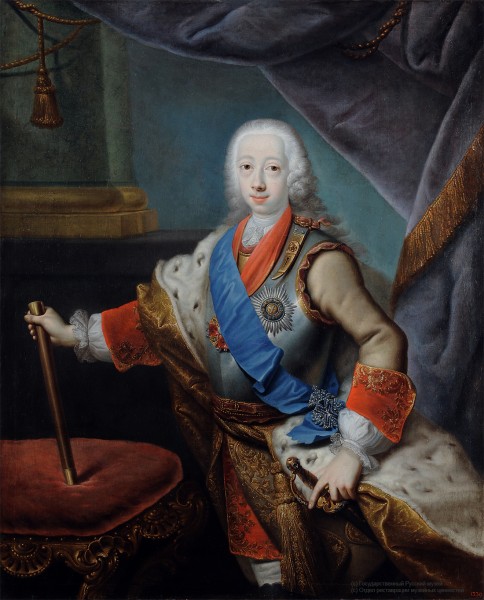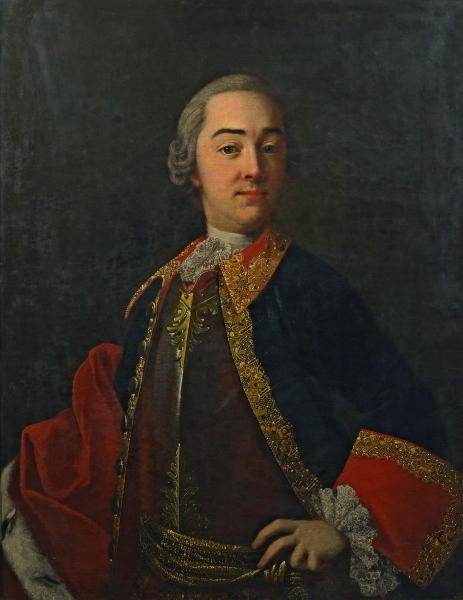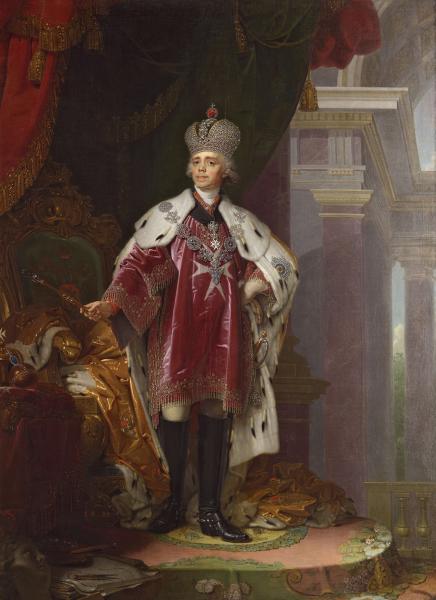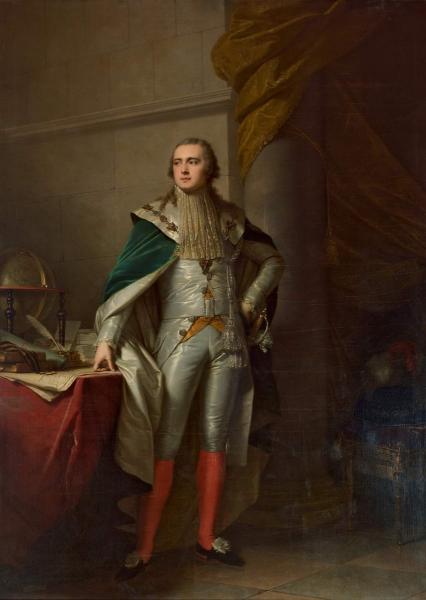The artist is a thunder

Peter III (Karl Peter Ulrich Golstein-Gottorpsky; February 21, 1728, keel − July 6/17, 1762, Ropsha) − The son of the Duke of Golstein-Gottorp Carl Frederick and daughter of Peter I Anna Petrovna. In 1742 he was brought to Petersburg as the heir to the throne. Having accepted Orthodoxy, he received the name of Peter Fedorovich. In 1745 he married Sofia Frederica Augustus Angalt Tserbst, future Catherine II. Since 1761, the Russian emperor, the first representative of the Holstein-Gottorp (Oldenburg) branch of the Romanovs in Russian throne. After a half -year reign, it was overthrown as a result of the palace coup (1762), who elevated his wife to the throne, Catherine II. He died in the Ropshinsky Palace under unclear circumstances.
Reigned from December 25, 1761 / January 5, 1762 to June 28 / July 9, 1762.
The 400th anniversary of the Romanov house. SPb, 2013. With. 112.
It is depicted in the uniform of an officer of the Kirasir regiments with the orders of St. Andrew the First -Called (tape and star) and St. Anna (Cross).
Stylistic and technological research suggests that the portrait could be written by another artist, and finished or "trimmed" the thunder itself.
Repetition of the portrait of 1743 (GTG).
On the restoration of the portrait on the website of the Restoration of Museum Values
+ About the restoration of the work
– Hide the text about restoration
The state of safety before restoration:
A portrait entered the Russian Museum in 1910 from C.P.Diaghilev (1872-1929). Upon receipt of work in a restoration workshop, first of all, a comprehensive technological and chemical-biological study was conducted, shooting was carried out in the infrared and in the ultraviolet areas of the spectrum. Radiography was made to identify copyright changes and hidden losses. Yellow varnish, records and pollution significantly distorted the author’s flavor. The surface of the painting was covered with a mesh of diverse craquelure. Along the entire perimeter along the edges there were traces of fractures along which spot bushes of a colorful layer to the ground were formed; Large losses before the canvas arose along the lower edge and in the corners; On the entire surface of the picture, there were sections of point attacks on craquelure.
Complex of the events:
First of all, a complex of conservation measures was carried out, aimed at strengthening the colorful layer and laying craquelure and fractures. Student pollution are removed from the surface of the painting. The edges are reinforced with duplication.
In the process of the picturesque part of the restoration, yellow varnish was raised and leveled over the entire surface. Hard old records first softened by the method of Petenkofer and immediately mildly cut off with eye scalpel. The surface of the colorful layer under the record was processed with a specially selected emulsion to quench the varnish lying there and was aligned with the total subtle level of the remaining varnish film. The work was carried out under the control of the visible luminescence of the surface in UV rays. Numerous losses of the colorful layer and soil were filled with restoration soil. At the end, tinted on the pre -applied film of restoration varnish was performed. After restoration, painting found a cold sound conceived by the author, the color integrity of the image was restored.
Keeping a story. Restoration workshop of the Russian Museum – 100 years. SPb, 2022. With. 69.


